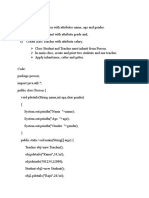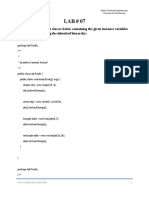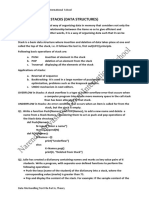0% found this document useful (0 votes)
36 views15 pagesInheritance Questions With Answers.
The document outlines various Java programming tasks involving inheritance, interfaces, and polymorphism. It includes creating classes such as Person, Student, Vehicle, Car, and others, implementing methods for calculations, and handling user input for displaying results. Additionally, it covers abstract classes and interface implementations for operations like speed calculation, complex number arithmetic, and geometric volume calculations.
Uploaded by
poorvaja 27Copyright
© © All Rights Reserved
We take content rights seriously. If you suspect this is your content, claim it here.
Available Formats
Download as DOCX, PDF, TXT or read online on Scribd
0% found this document useful (0 votes)
36 views15 pagesInheritance Questions With Answers.
The document outlines various Java programming tasks involving inheritance, interfaces, and polymorphism. It includes creating classes such as Person, Student, Vehicle, Car, and others, implementing methods for calculations, and handling user input for displaying results. Additionally, it covers abstract classes and interface implementations for operations like speed calculation, complex number arithmetic, and geometric volume calculations.
Uploaded by
poorvaja 27Copyright
© © All Rights Reserved
We take content rights seriously. If you suspect this is your content, claim it here.
Available Formats
Download as DOCX, PDF, TXT or read online on Scribd
/ 15


















































































